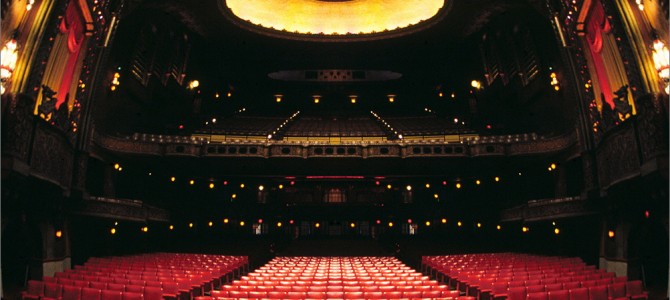
Amid the furor over the $25 million bailout of the Kennedy Center and their subsequent mass firings, one thing has become abundantly clear. The Wuhan virus is going to devastate performing arts organizations all over the country. Between the lack of ticket sales during the shut down, and lower sales and donations in the woeful economic aftermath, it is likely that many won’t survive.
Non-profit performing arts organizations, which is pretty much all of them, operate on razor-thin budgets as it is. Very few have the capacity to withstand months and months of lost revenue. Already they are desperately sending out pleas to donors to keep them afloat. The ones that emerge from this will be wounded badly, but art cannot stop. After all, people have made art in far worse conditions than this throughout history.
Part of what makes the performing arts so vulnerable is that the non-profit model has always been something of a financial fairytale. Prior to the 1960s, most of the industry was for-profit and therefore market-driven. The main goal was to attract audiences. But in the non-profit model that then emerged, half of the revenue for most companies comes from donations. In the subsequent decades down to today, the goal shifted from attracting new audiences to attracting more donors.
The very first article I ever penned for The Federalist was called “Taking Back the Arts,” in 2013. In it, in addition to ending the National Endowment for the Arts, I urged that producing companies should not have 501(c)3 tax-exempt status that makes donations deductible. My concern wasn’t federal fiscal responsibility or Jesse Helms-style worries about obscenity, but the quality of the arts and its ability to draw larger, more diverse audiences.
As I wrote then, “According to the NEA’s own numbers the percentage of Americans who attended theater dropped by thirty percent from 1992 to 2008. In that time the number of 501 (c) 3 tax-exempt theaters doubled, from about 900 to about 1800. The total number of taxpayer dollars dedicated to those companies also increased. So more companies are getting more money to create theater but fewer people are attending.” In addition, most attendees are upper income, so we are subsidizing the entertainment of the well off.
The performing arts community, of which I was then a member, objected to my ideas fiercely and angrily. After all, I was suggesting taking enormous amounts of free money away from the arts and artists. In fact, artist’s salaries are a relatively small percentage of the expenses of these companies. Most goes to development — i.e., getting more donors — and infrastructure. The result of this system was, not surprisingly, bloated bureaucracies and a severe lack of innovation in production and artistic models.
Now, through the horrible and deadly means of the coronavirus, the economic hit that I was urging the government and the industry to undertake voluntarily may well occur as the result of a force of nature. I do not wish this to be so, but if now it must be, there is opportunity in the devastation. The non-profit movement saved the performing arts from the positive effects of creative destruction that innovation in market-driven fields naturally drives.
The opportunities for innovation in a post-virus landscape are myriad. Leaner times can lead to new production models. Without the ability to buy multi-thousand-dollar curtains and lighting systems, companies with fresh ideas can explore new types of venues, including those in which food and drink and a more social atmosphere can be achieved. It can do for theater and dance what Alamo Draft House and the like have done for movie theaters as attendance at traditional movie theaters declined. That kind of new thinking is sorely lacking in the non-profit model.
Performing arts companies and indeed performing artists themselves will face a crossroads when the current crisis ends and the industry can get back to business. They can try, possibly in vain, to put the old Humpty Dumpty model that wasn’t working back together, or they can find new ways to bring audiences into an enlivened and more vibrant future of the American performing arts. For an institution that has been frozen in amber for decades, this is a unique opportunity to create something truly new.
As my colleague Joy Pullmann points out, the coronavirus offers opportunity for cultural gains in a whole host of fields from education, to the workplace, to community environments. If the performing arts industry fails to seize on this opportunity to make its productions more fresh, vibrant, and accessible, and instead tries to recapture its failing powdered wiggery, it would be a great shame.
Crisis is often the mother of great art. When the sun breaks through and we are allowed to sit shoulder-to-shoulder again, let it be for us to see things we never have before. From the ashes, let a phoenix emerge that announces a new age of American performing arts. The American people will need it.








